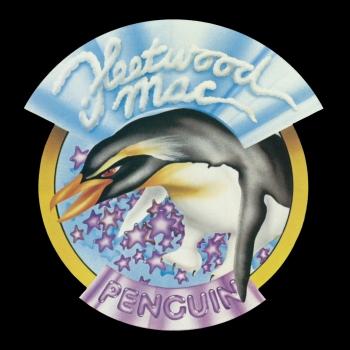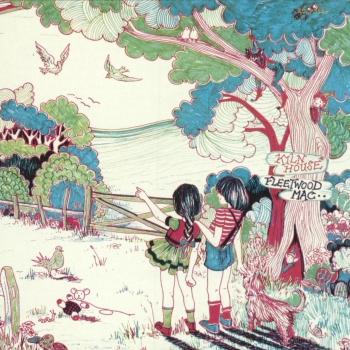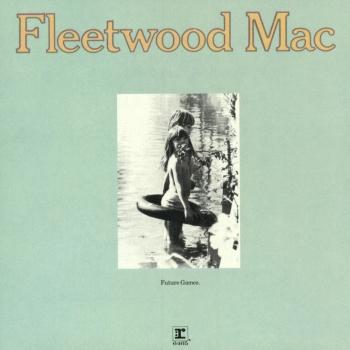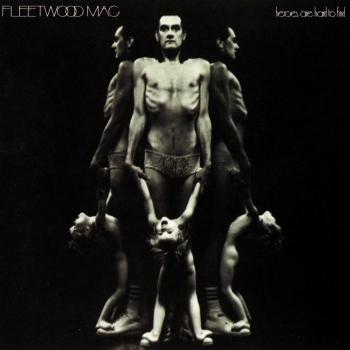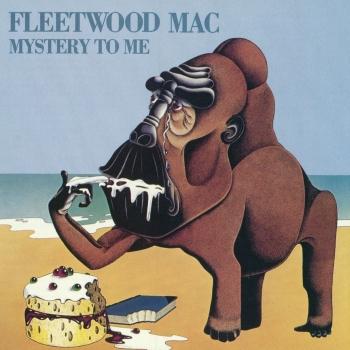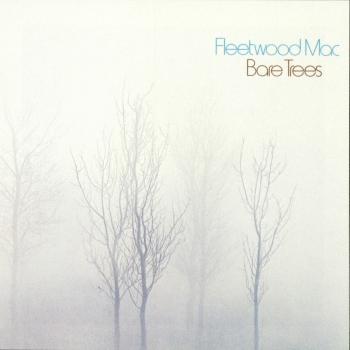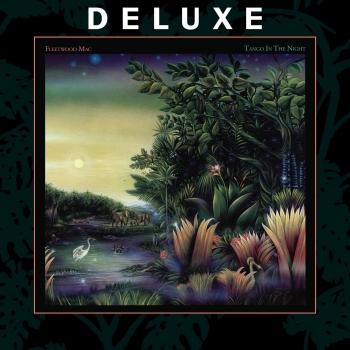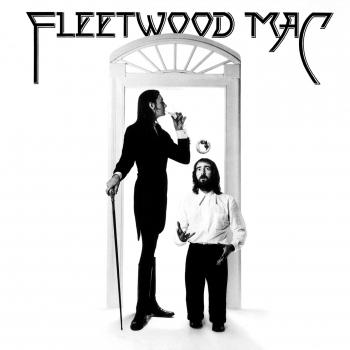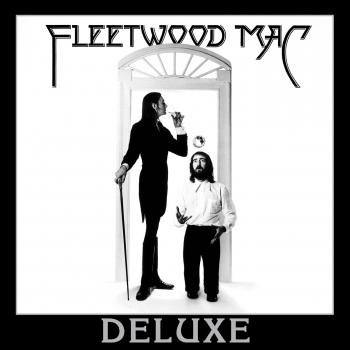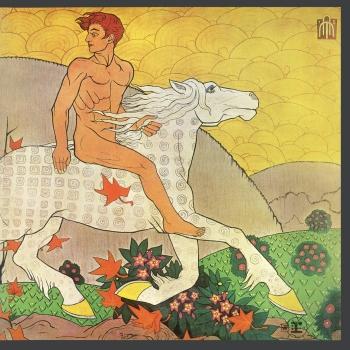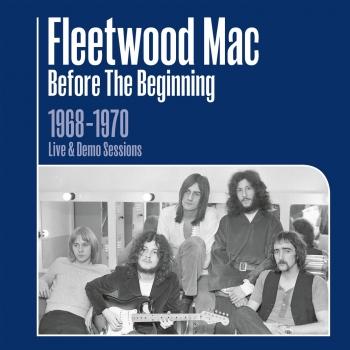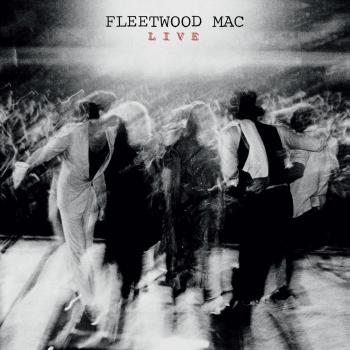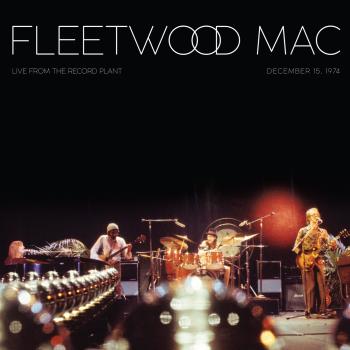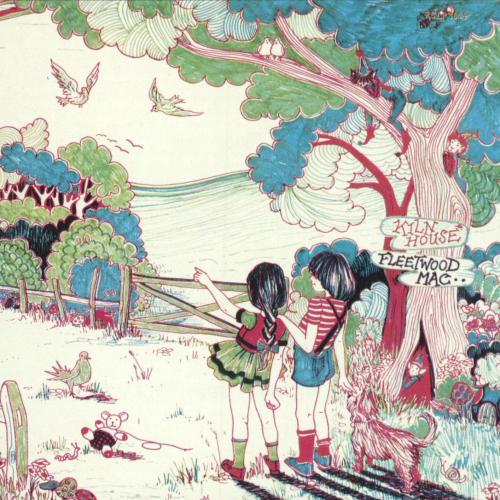
Kiln House (Remastered) Fleetwood Mac
Album Info
Album Veröffentlichung:
1970
HRA-Veröffentlichung:
31.03.2017
Label: Rhino/Warner Bros., Rhino Records
Genre: Rock
Subgenre: Classic Rock
Interpret: Fleetwood Mac
Das Album enthält Albumcover
Entschuldigen Sie bitte!
Sehr geehrter HIGHRESAUDIO Besucher,
leider kann das Album zurzeit aufgrund von Länder- und Lizenzbeschränkungen nicht gekauft werden oder uns liegt der offizielle Veröffentlichungstermin für Ihr Land noch nicht vor. Wir aktualisieren unsere Veröffentlichungstermine ein- bis zweimal die Woche. Bitte schauen Sie ab und zu mal wieder rein.
Wir empfehlen Ihnen das Album auf Ihre Merkliste zu setzen.
Wir bedanken uns für Ihr Verständnis und Ihre Geduld.
Ihr, HIGHRESAUDIO
- 1 This Is A Rock 02:45
- 2 Station Man 05:53
- 3 Blood On The Floor 02:44
- 4 Hi Ho Silver 03:07
- 5 Jewel Eyed Judy 03:18
- 6 Buddy's Song 02:10
- 7 Earl Gray 04:04
- 8 One Together 03:25
- 9 Tell Me All The Things You Do 04:12
- 10 Mission Bell 02:33
Info zu Kiln House (Remastered)
„Kiln House“ is the fourth album by British rock band Fleetwood Mac, released in 1970. This is the first of the post-Peter Green Fleetwood Mac albums, and their last album to feature Jeremy Spencer. Christine McVie was present at the recording sessions and contributed backing vocals and cover art, although she was not a full member of the band until shortly after the album's completion.
Spencer's retro 50s homages and parodies dominate the album, but Danny Kirwan's more sincere songs are almost equally prominent. "Buddy's Song" is credited to Buddy Holly's mother, but is basically the song "Peggy Sue Got Married" with new lyrics listing a number of Buddy Holly song titles.
The Fleetwood Mac of 1970, before Lindsay Buckingham and Stevie Nicks joined the group, was primarily a British blues band. Fleetwood Mac continues today as one of the most enduring and successful rock bands in history.
„Fleetwood Mac was still primarily a blues band on this, their first album after the departure of founder/nominal leader Peter Green. But the remaining members, Mick Fleetwood, John McVie, Jeremy Spencer, and Danny Kirwan (plus McVie's wife, Christine, not yet officially part of the group) started broadening the band's use of blues into other contexts, and adding new influences in the absence of Green's laser-like focus. Jeremy Spencer's fascination with American rock & roll manifests itself on the album opener, "This Is the Rock" (which crosses paths with Elvis Presley's Sun Records sides), whilst "Hi Ho Silver" is a higher-wattage shouter covering the same territory that Spencer explored with the band (sans Green) on "Someone's Gonna Get Their Head Kicked in Tonight," only with a little more subtlety and grace; and his tribute to Buddy Holly, "Buddy's Song," even outdoes the classic Joe Meek/Mike Berry "Tribute to Buddy Holly" as a memorial to the late rock & roll star -- and it was always too good and sincere to be mistaken for part of any oldies revival. "Jewel Eyed Judy" and "Earl Gray" are two superb showcases for Danny Kirwan, the former as a vocalist and player and the latter as a composer and guitarist in tandem with Spencer, in what was a pretty good successor to the Green-era instrumental hit "Albatross." "One Together" shows off a harmony-vocal side to this band that was something new in 1970, on one of the prettiest tunes they ever had to work with. And Kirwan gets the spotlight once again as a guitarist on the hard-rocking "Tell Me All the Things You Do." The album ends with the lyrical, relaxed McCartney-esque folky pop of "Mission Bell," which seemed to point the way toward their future direction. None of this may be as intense as the music they cut with Peter Green running the show, but in its relaxed way Kiln House represents the same virtuoso blues-rock outfit having a little fun while making a record -- think of it as roughly Fleetwood Mac's equivalent to the Rolling Stones' Between the Buttons.“ (Bruce Eder, AMG)
Jeremy Spencer, guitar, vocals, piano, lead vocals on "This is the Rock", "Blood on the Floor", "Hi Ho Silver", "Buddy's Song", "One Together" and "Mission Bell"
Danny Kirwan, guitar, vocals, lead vocals on "Station Man", "Jewel-Eyed Judy" and "Tell Me All the Things You Do"
John McVie, bass
Mick Fleetwood, drums, percussion
Additional musicians:
Christine McVie, backing vocals, keyboards
Recorded June–July 1970 at De Lane Lea Studios, London
Produced by Fleetwood Mac
Digitally remastered
Please Note: We offer this album in its native sampling rate of 44.1 kHz, 24-bit. The provided 192 kHz version was up-sampled and offers no audible value!
Fleetwood Mac
The Fleetwood Mac story is an episodic saga that spans more than 30 years. It is the saga of a British blues band formed in 1967 that became a California-based pop group in the mid-Seventies. In between came a period where Fleetwood Mac shuffled personnel and experimented with styles, all the while releasing solid albums that found a loyal core audience. Despite all the changes, two members have remained constant over the years: drummer Mick Fleetwood and bassist John McVie, whose surnames provided the group name Fleetwood Mac. Though most rock fans are familiar with the lineup that includes Lindsey Buckingham and Stevie Nicks-by far the longest-running edition of the band, responsible for the classic albums Fleetwood Mac and Rumours-the group possesses a rich and storied history that predates those epics. Earlier Fleetwood Mac lineups included guitarists Peter Green, Jeremy Spencer, Danny Kirwan and Bob Welch. Fleetwood Mac when Green, Fleetwood and McVie, who were all expatriates from British bandleader John Mayall’s Bluesbreakers, decided to form a band. McVie and Fleetwood had been playing with Mayall, a British blues legend, since 1963 and 1965, respectively, while Green replaced Eric Clapton (who exited to form Cream) in 1966. Initially a quartet, the original Fleetwood Mac also included guitarist Jeremy Spencer and then expanded with the addition of Danny Kirwan prior to their second album. Not surprisingly, the group’s first two U.K. albums-Fleetwood Mac (1967) and Mr. Wonderful (1967)-were heavily blues-oriented. “Black Magic Woman,” a Peter Green song from the latter album, later became a major hit for Santana. In 1969, Fleetwood Mac recorded at Chess studios with American blues musicians, including Willie Dixon and Otis Span; it was released as the two-volume Blues Jam in the U.K. and as Fleetwood Mac in Chicago in the U.S. By decade’s end, however, Fleetwood Mac had begun moving from traditional blues to a more progressive approach. Around this time, the group adopted its distinctive “penguin” logo, based on zoo-lover and amateur photographer McVie’s interest in the birds. There are arguably three “definitive” Fleetwood Mac lineups. One of them is the blues-oriented band of the late Sixties, which arrayed three guitarists (Green, Spencer and Kirwan) around the rhythm section of Fleetwood and McVie. They are best represented by 1969’s Then Play On, a milestone in progressive blues-rock. After Green’s exodus in mid-1970, the remaining members cut the more easygoing, rock and roll-oriented Kiln House. Early in 1971, a born-again Spencer abruptly left the band during a U.S. tour to join the Children of God. The second key configuration found Fleetwood, McVie and Kirwan joined by keyboardist Christine McVie (born Christine Perfect, she’d married bassist McVie) and guitarist Bob Welch, a Southern Californian who became the group’s first American member and a harbinger of new directions. This configuration produced a pair of ethereal pop masterpieces, Future Games (1971) and Bare Trees (1972). Kirwan, who was having personal problems, was asked to leave in August 1972. The remaining foursome, joined by new recruits Dave Walker (vocals) and Bob Weston, recorded Penguin (1973); sans Walker, they cut Mystery to Me (1974). Again reduced to a quartet with Weston’s departure, they released Heroes Are Hard to Find later that same year. Finally, the platinum edition of Fleetwood Mac came together in 1975 with the recruitment of Lindsey Buckingham and Stevie Nicks. The San Francisco duo had previously cut an album together as Buckingham-Nicks. Drummer Fleetwood heard a tape of theirs at a studio he was auditioning, and the pair were drafted into the group without so much as a formal audition. This lineup proved far and away to be Fleetwood Mac’s most durable and successful. In addition to the most solid rhythm section in rock, this classic lineup contained strong vocalists and songwriters in Buckingham, Nicks and Christine McVie. Male and female points of view were offered with unusual candor on the watershed albums Fleetwood Mac (1975) and Rumours (1977). Fleetwood Mac introduced the revitalized group with such sparkling tracks as “Over My Head,” Fleetwood Mac’s first-ever Top Forty single; “Rhiannon,” which became Nicks’ signature song; “Say You Love Me,” which showed of the group’s three-part harmonies; and “Monday Morning,” the driving album opener and FM-radio favorite. Rumours was written and recorded as three long-term relationships-between Buckingham and Nicks, the married McVies, and Fleetwood and his wife-publicly unraveled. The album is a virtual document of romantic turmoil, and its timing reflected the interpersonal upheavals of the liberated Seventies. Resonating with a mass audience like no other album in rock history, Rumours yielded a bumper crop of songs with enduring appeal, among them the Top Ten hits “Go Your Own Way,” “Dreams,” “Don’t Stop” and “You Make Loving Fun.” Fleetwood Mac toured for seven months behind Rumours and reigned as the most popular group in the world. Rumours has to date sold 18 million copies, making it the fifth best-selling album of all time. As a group, Fleetwood Mac has sold more than 70 million albums since its inception in 1967. Under the creative guidance of Lindsey Buckingham, whose skill as a producer and pop visionary became increasingly evident-Fleetwood Mac grew more emboldened with the double album Tusk, released in 1979. A more experimental album, Tusk didn’t match its predecessors sales, but it did earn two more Top Ten hits-"Sara" and “Tusk"-while extending the group’s longevity by forswearing formulas. Solo careers commenced during the three-year layoff that followed another extensive tour. Stevie Nicks, in particular, nurtured a career that rivaled Fleetwood Mac’s for popularity. Fleetwood Mac released two studio albums in the Eighties-Mirage (1982) and Tango in the Night (1987)-but its front-line members were increasingly drawn to their solo careers. Disinclined to tour, Buckingham announced he was leaving Fleetwood Mac shortly after Tango in the Night. He was replaced by guitarists Billy Burnette and Rick Vito, who appeared on the 1990 album Behind the Mask. Eventually, both Nicks and Christine McVie revealed they, too, would no longer tour with Fleetwood Mac. Nicks officially left the band a month after Fleetwood Mac regrouped to perform “Don’t Stop” at President Bill Clinton’s inauguration in January 1993. The indefatigable core of Fleetwood and the McVies recruited guitarist Dave Mason and singer Bekka Bramlett, but the proverbial link in Fleetwood Mac’s chain had been broken one too many times and this lineup’s one album, Time (1995), fared poorly. Then, in 1997, Fleetwood Mac’s classic lineup set aside their differences for a reunion that marked the 30th anniversary of the original group’s founding and the 20th anniversary of Rumours’ release. A concert was filmed for an MTV special and saw release on video and audio formats as The Dance, which found the group revisiting old material and premiering new songs. A full-fledged reunion tour followed.
Dieses Album enthält kein Booklet










